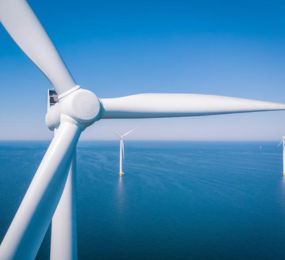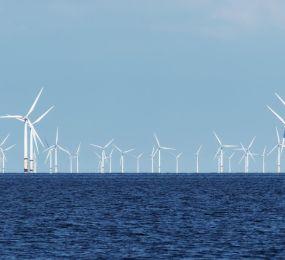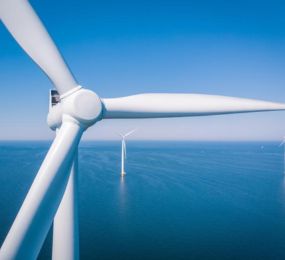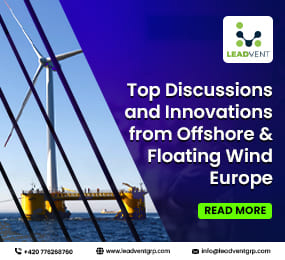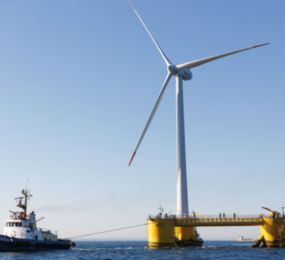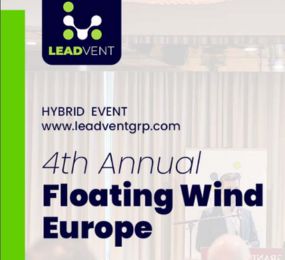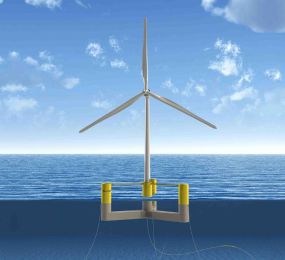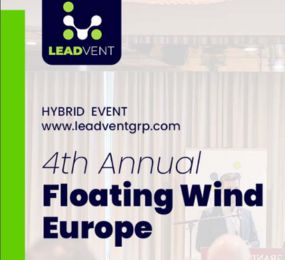The Floating Offshore Wind Maintenance industry transforms renewable energy use by enabling the effective extraction of offshore wind power. As floating offshore wind develops rapidly, its financial stability issues must be dealt with. The upcoming 5th Annual Floating Wind Europe event from Leadvent Group brings industry players together to tackle issues and find new paths for developing wind energy sustainably.
Floating Offshore Wind Needs Bankable Projects for Successful Development
When a project shows it can attract investment funds, it achieves bankability. Floating offshore wind developments need to solve both engineering problems and financial troubles to win real investor backing. Developing floating offshore wind energy from renewable sources encounters specific difficulties that must be overcome before reaching its full capacity.
Key Technical Challenges at Floating Offshore Wind Conference
- Turbine Durability and Maintenance: Floating offshore wind turbines face tough marine weather conditions, including high winds and salinity, plus windswept waves. Keeping turbines active over time with reduced upkeep expenses is essential. Floating offshore wind project costs over their lifetime include 25-30% for maintenance operations.
- Mooring and Anchoring Systems: A stable floating turbine needs secure anchoring solutions. To create strong foundation materials and cheaper deployment methods, research in engineering and materials deserves attention.
- Grid Integration: Floating wind farms typically need to be installed in deep ocean waters, which demands dependable undersea transmission connections. Energy transmission problems represent one of the most difficult technical hurdles in this field.
- Scalability and Standardisation: A lack of approved operational models holds back the expansion of floating wind farms. To grow these systems successfully, they must follow clear steps during the production and deployment stages.
Financial Considerations
- High Initial Investment: Installing floating wind turbines costs more than setting up fixed-bottom turbines. Investors at the earliest funding stage need high returns because they assess the technology as risky.
- Uncertain Revenue Streams: Wind patterns and unexpected maintenance costs can change how well the project will make money.
- Insurance and Risk Mitigation: Insurers must create specific protection plans to handle the one-of-a-kind dangers faced by floating offshore wind ventures.
Case Study: Hywind Scotland
Hywind Scotland serves as the initial floating wind farm example in our research. Equinor created this 30 MW project to prove floating wind power systems work. In its two initial years of operation, starting from 2017, Hywind achieved a 54% capacity factor, which surpassed typical offshore wind farm results. The project proved difficult to install and required improved mooring technology because it cost too much money.
Event Spotlight: The 5th Annual Floating Wind Europe Event
In March 2025, the Leadvent Group will hold its Offshore Wind Conference 2025 to draw industry experts for essential professional discussions. The upcoming conference aims to develop better floating offshore wind technology solutions alongside solving bankability problems.
Key Highlights
- Expert Panels: Learn from recognised industry experts about floating offshore wind maintenance and how to make operations run better at lower costs.
- Case Study Presentations: Study the results of actual projects with their issues and how teams overcame them.
- Networking Opportunities: Interact with important decision-makers, investors, and technology partners to develop joint work initiatives.
- Technical Workshops: Experience training programs about new mooring technology as well as power grid interfaces and wind turbine advancements.
For more information and to secure your place at the conference, visit the official event page: Take part in the 5th Annual Floating Wind Europe event.
The Path Forward
To enhance the bankability of the Floating Offshore Wind Maintenance project, industry stakeholders must collaborate on several fronts:
- Innovative Financing Models: Governments and investors join forces to protect project investments through financial help programs.
- Technological Advancements: Constant research efforts help the industry save money and operate better. Digital twins and predictive maintenance technology help operations run better.
- Incentives Enabling Mechanism: Investor trust in government financing of long-term contracts to investors and investors in these particular informal transactions is likely boosted by a quick and easy permitting process structure.
- Local Partnerships: Active cooperation among technological collaborators, developers, and investors ensures economic feasibility in scaling and saves personnel and other costs.
Conclusion
The future success of floating offshore wind depends on teaming up with others to solve technical and financial problems using innovative solutions. The 5th Annual Floating Wind Europe event brings together experts who develop solutions and strategies to guide floating offshore wind technologies towards sustainability. Through determined problem-solving, the wind industry can tap into floating offshore potential and help achieve essential renewable energy targets worldwide.
Join the Floating Offshore Wind Conference 2025 to discover industry developments and help shape the future of offshore wind power. Check out Leadvent Group for more information.
Common Questions About Floating Offshore Wind Power
Q1: How can floating offshore wind technology help producers better utilise available wind power?
Floating offshore wind systems put turbines in deeper waters where better wind resources create bigger energy production possibilities.
Q2: What special care procedures must floating wind turbines use compared to their fixed-bottom counterparts?
The dynamic position of floating turbines demands advanced maintenance technology to handle extreme weather and dynamic mooring systems.
Q3: What benefits do industry personnel get from attending the Offshore Wind Conference 2025?
Industry experts at the Offshore Wind Conference 2025 show you how to solve financial and technical problems while connecting you to others steering floating offshore wind toward its future.


